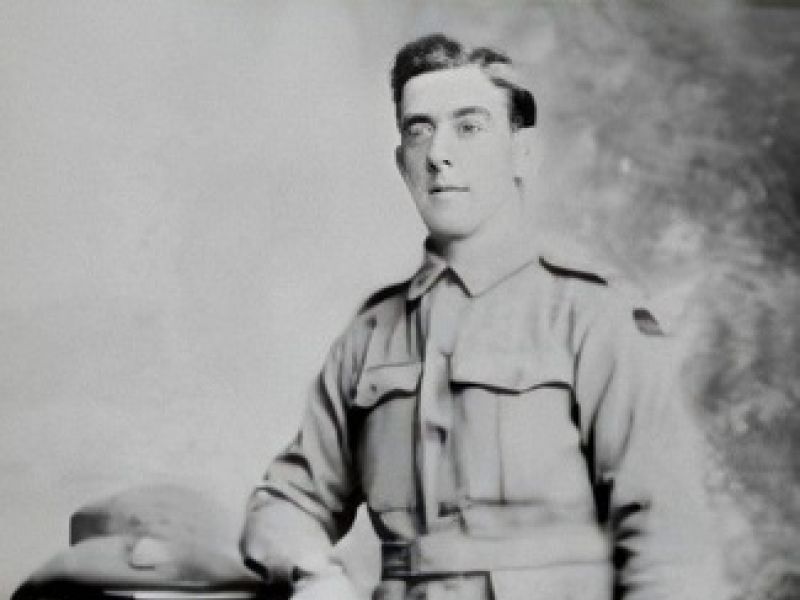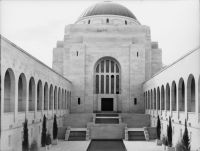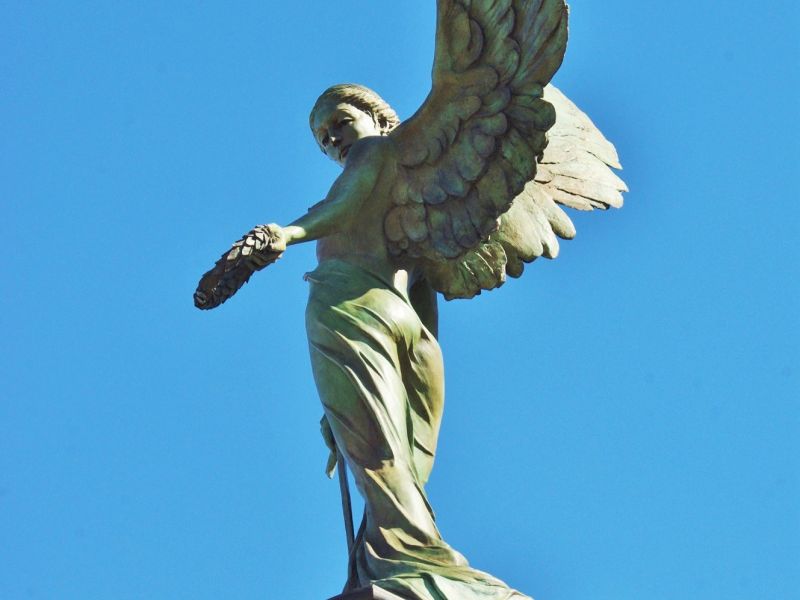Corporal Louis Herbert Francis Nadin, 1st Battalion, AIF
Louis Nadin was born in 1895, the second son of Louis and Maria Nadin of Sydney. His father’s family came from the Candelo district of New South Wales, but Louis grew up in Sydney, where he was educated at the Marrickville Convent school, and later the Christian Brothers High School, before going to work as a driver and carter.
Louis Nadin enlisted in the Australian Imperial Force within weeks of the outbreak of war in August 1914. He underwent a period of training in Australia before leaving for active service overseas with the first contingent two months later as a member of the 1st Battalion.
The 1st Battalion arrived in Egypt on 2 December 1915, and continued training in the desert for some months before taking part in the landing at Anzac Cove. Forming parts of the second and third waves, the men landed in the thin morning light and rushed for the heights behind the beach. The battalion quickly became muddled with other units on its flanks, and it would take several days to sort out the confusion.
About two weeks after the landing, Private Nadin was wounded in action by an enemy bayonet. Although his wound was considered slight, he was sent to hospital to recover. There he sent a cheery postcard to his father to say that he was suffering from a “Turkish vaccination,” which was the first his family heard of his wounding. His mother was deeply shocked by the news, but his father was furious that he had not been formally notified long before by the military authorities. Mr. Nadin said, “Surely… there has been gross carelessness somewhere, and this is not an isolated case.” He went about making the situation as public as he could to try to urge the authorities to fix the situation and get news of wounded men home to their families much sooner.
Ironically, Mr. Nadin did not know that in the time between the postcard being sent from hospital overseas and arriving in Australia, Louis had been returned to the front and wounded again. On the 6th of August his battalion took part in an attack to capture the Turkish trenches at Lone Pine. Unbeknownst to the attacking troops, the Turks had covered the trenches in this area with pine logs, and the Australians were forced to rip them up and climb down into the trenches below to engage with the enemy. After several days’ vicious hand-to-hand fighting, the operation was a success, but at a great cost.
At some point during the fighting, Private Nadin broke his ankle. He was evacuated to hospital in Egypt, where he spent several months recovering. Military authorities, who had taken nearly three months to notify the Nadin family of Louis’s first wound, sent notification of his second wound just over two weeks later. Louis was fit to return to his battalion early in the new year.
Louis returned to a battalion that had recently been evacuated from Gallipoli and was undergoing a period of training and reorganisation in Egypt in preparation for fighting in Europe. About a month later he was sent to France, and within three months he had taken part in the capture of the French village of Pozieres.
Louis Nadin proved a capable soldier, and by the end of the year had been promoted to corporal. In December he became eligible for leave to England, returning to his battalion in France just before Christmas 1916.
Corporal Nadin returned to the front line during one of the most bitterly cold winters on record. Both sides were forced to endure the conditions, defending their trenches until the weather cleared enough that they could resume operations in the spring. But although active fighting had slowed, the front line was still an extremely dangerous place to be.
On 4 January 1917, two weeks after Nadin had rejoined his battalion, he was caught in the blast of an exploding shell in a trench near the French village of Gueudecourt. He was badly wounded in the arms and back, and was carried to an advanced dressing station. Here he was hurriedly operated on to amputate both of his arms, but he died a few hours after reaching the dressing station.
Louis Nadin was buried in the military cemetery at Bernafay Wood, where his remains lie today under the words, “Sweet Jesus have mercy on his soul, RIP”. He was 21 years old.
Photo Courtesy of Pierre Vandervalden
- AWM Roll of Honour https://www.awm.gov.au/collection/R1644916

 Australian War Memorial
Australian War Memorial